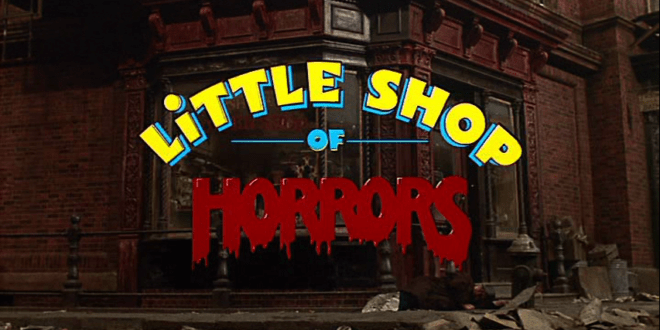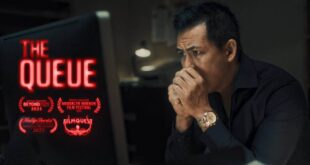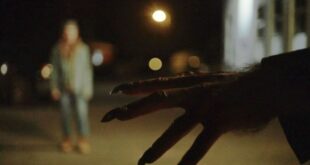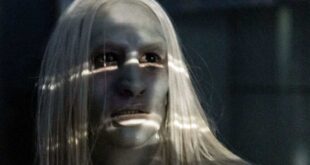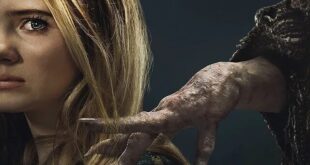First things first… I’m not really a fan of musicals. However, there are a few exceptions.
I first saw Frank Oz’s Little Shop of Horrors, released on December 19, 1986, as a child and I immediately fell in love with the film. It is an adaptation of the off-Broadway musical by writer Howard Ashman (Beauty and the Beast 1991) and composer Alan Menken (Sausage Party 2016), which was in turn inspired by B movie god Roger Corman (The Masque of the Red Death 1964) and writer Charles B Griffith’s original 1960 film. Oz’s flick is loaded with talent, dark comedy, and catchy tunes. I decided to watch the recently reconstructed director’s cut, which features a bleaker final 23 minutes, for this thirty-fifth anniversary look back, as it was the uncompromised original vision of Oz, who is perhaps best known for his voice work as Star Wars‘ own beloved Yoda.
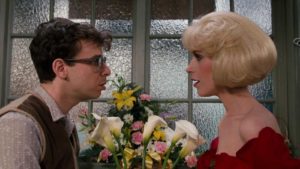
The always reliable Rick Moranis (Ghostbuters 1984) is our lead, the kind but dweeby Seymour Krelborn. It’s the early ‘60s, and Seymour works in a skid row flower shop owned by the blustery Mr. Mushnik (Vincent Gardenia: Death Wish 1974). Ellen Greene (Pump Up the Volume 1990) plays Audrey, the squeaky voiced object of Seymour’s affections and the only other flower shop employee. Mushnik is ready to close the business until Seymour and Audrey place a strange Venus fly trap-type plant, which Seymour has dubbed Audrey II, in the window, and almost immediately, a crowd forms.
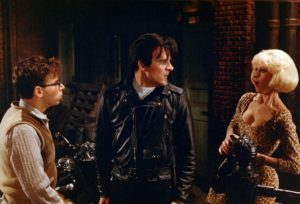
After recounting the odd circumstances where he found Audrey II that involved a solar eclipse, Seymour accidentally discovers that the plant requires human blood for sustenance. With success and fame calling, he reluctantly continues to feed Audrey II from his own veins. Once the now much larger Audrey II begins to speak though (with charismatic voice work provided by Levi Stubbs of The Four Tops fame), it becomes clear that fresh meat will need to be added to the menu, much to Seymour’s dismay.
A large supporting role in Little Shop Of Horrors belongs to Steve Martin (All of Me 1984) as Audrey’s nitrous-huffing sadistic greaser dentist boyfriend, Orin Scrivello. John Candy (Uncle Buck 1989), Bill Murray (Scrooged 1988), Christopher Guest (This is Spinal Tap 1984), and Jim Belushi (Twin Peaks: The Return 2017) also provide memorable cameos. Tichina Arnold (Martin TV series), Michelle Weeks (Norman’s Corner 1987), and Tisha Campbell (House Party 1990) act as a sort of Greek Chorus.
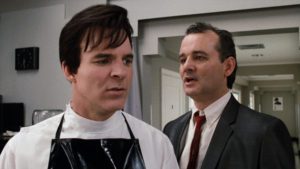
Ashman adapted his own script, and it’s a tight effort. Character work is well done, with even the smallest roles feeling distinctive. This is a fairly heightened world, bordering on a fairy tale aesthetic, so realism is mostly dispatched, although suspension of disbelief is easily obtained. I wouldn’t call the comedy in Little Shop of Horrors riotous, but the gleeful mood is contagious. Obviously, Oz’s direction and the actors play a huge part in all of this. Thankfully, there’s not much dancing, but the musical sequences are excellent. The lyrics are funny and clever, and it seems like the main cast did much of their own singing.
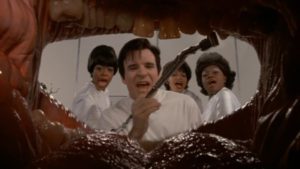
Moranis effortlessly captures our sympathies, even as he wanders down an increasingly dark path. I could see where Greene’s creative affectations might irritate some folks, but I think her performance fits in with the borderline cartoonish atmosphere. Martin absolutely slays as the reprehensible Orin and gives my favorite performance. I also don’t think it’s a stretch to say that Stubbs’ voice work is iconic. So yeah, this is an outstanding cast.
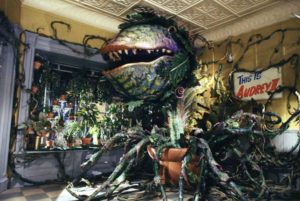
Little Shop of Horrors was shot by Robert Paynter (An American Werewolf in London 1981) entirely on a set. The camera movement is pretty dynamic, imbuing the story with kinetic momentum. I particularly enjoyed the crane shots, which give the piece some scale.
Production design is exquisitely detailed, though in a highly artificial manner. Again, this works in achieving a fairy tale look, albeit one covered in a certain urban griminess. The editing by John Jympson (A Fish Called Wanda 1988) is key in creating rhythm, both narratively and musically. The musical interludes feel naturalistic and are effortlessly woven into the traditional storytelling. Gillian L Hutshing (The Influencer 2021) is credited as the editor for the sequences involved in the alternate ending, and she does a fine job of seamlessly integrating the footage.
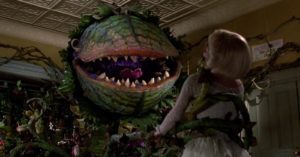
The creature work is top notch. The realization of Audrey II is utilized through a combination of animatronics and puppetry. It truly feels like one of the cast, with the effects team granting a believable expressiveness to the hungry and scheming plant. The film probably wouldn’t be as beloved as it is without this impressive aspect. Additionally, the stop motion and miniature work utilized in the alternate ending for the director’s cut is nicely done and feels like an organic continuation of the effects team’s work from throughout the film.
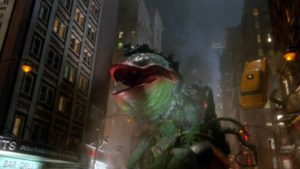
Frank Oz’s Little Shop of Horrors is still a ton of fun. I’d be hard pressed to say if I prefer the director’s cut or not. The theatrical version with the happier ending is the film I grew up loving, but the horror fan in me enjoys the bleaker cut. For what it’s worth, besides being Oz’s original vision, it’s also closer to Ashman and Menken’s stage iteration. Regardless, it’s kind of nice to be able to choose between two fully realized variations. Recommended for fans of Streets of Fire (1984), Spaceballs (1987), and Cry-Baby (1990).
 PopHorror Let's Get Scared
PopHorror Let's Get Scared
